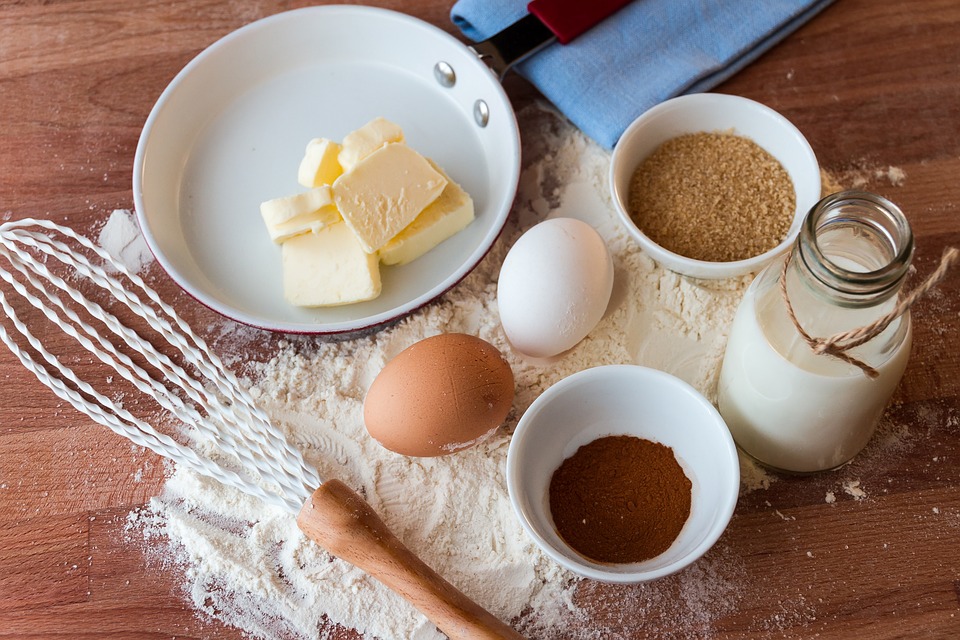Butter is more than just a creamy spread or an indulgent flavor booster—it’s a complex emulsion whose microscopic structure has a profound impact on the texture, rise, and flavor of your baked goods. From flaky pastries to tender cookies, understanding how butter behaves at different temperatures can transform your baking from “good” to “extraordinary.” Let’s dive into the science behind butter’s hidden structure and explore why temperature is the secret ingredient you never knew you needed.
1. What’s Inside Butter?
At its core, butter is an emulsion—a mixture of water droplets dispersed in a fat matrix, stabilized by proteins and phospholipids. Roughly speaking, butter consists of:
-
About 80% Fat: A blend of saturated and unsaturated milk fatty acids.
-
About 16–18% Water: In tiny droplets, which evaporate as steam during baking, aiding leavening.
-
2–4% Milk Solids: Proteins and lactose that brown and flavor your baked goods.
These components aren’t randomly arranged. Butter fat exists in different crystalline forms—primarily α, β’, and β crystals—each with unique melting points and hardness. The proportion and arrangement of these crystals depend heavily on temperature and cooling history.
2. Temperature & Fat Crystal Formation
a. Cold Butter (<10 °C / 50 °F)
-
Dominated by β crystals, the hardest form of butter fat.
-
Provides structure: solid slabs that can be cut into dough to create pockets of fat.
-
Ideal for laminated pastries (croissants, puff pastry) and cut-in cookie dough (e.g., pie crusts, scones).
b. Room-Temperature Butter (18–22 °C / 64–72 °F)
-
A blend of β’ and some residual α crystals.
-
Soft enough to whip air when creamed with sugar, creating tiny air bubbles that expand in the oven.
-
Perfect for creamed cakes, buttercreams, and soft cookie batters.
c. Melted Butter (>30 °C / 86 °F)
-
All crystals melt, turning butter into a uniform liquid emulsion.
-
Less structure—leads to denser, chewier textures (think brownies or flat, spread-out cookies).
-
Useful for quick breads, muffins, and some cookie recipes where a looser structure is acceptable.
3. Butter in Action: Baking Applications
Flaky Pastry & Pie Crusts
Cold butter’s hard crystals act like microscopic wedges. As the dough bakes, trapped moisture turns to steam, forcing layers apart and creating the coveted flakiness. Over-softened butter won’t hold those layers, yielding a dense, tough crust.
Creamed Cakes & Cookies
At room temperature, butter’s softer crystals can be beaten to trap air. This aeration translates to a lighter crumb in cakes and cookies. If butter is too cold, it resists creaming and won’t incorporate enough air; if too warm, it collapses, creating a greasy mix that can’t hold structure.
Brownies & Quick Breads
Here, melted butter is often used to streamline mixing and produce a fudgier, denser texture. Since there’s no creaming stage, you rely on air whipped into eggs or baking powder/soda for lift, and the uniform liquid butter contributes richness without too much rise.
4. Practical Tips for Handling Butter
-
Chill Strategically: For flaky doughs, keep butter in the refrigerator until just before use. Work quickly to avoid warming it beyond 15 °C (60 °F).
-
“Windowpane” Test for Softness: Press a small piece between fingers—it should give slightly but hold its shape without smearing. That’s ideal for creaming.
-
Slice or Grate: Cold butter is hard to cut evenly. Slice it thinly or grate it through a box grater for quick incorporation without overworking the dough.
-
Avoid Microwave Dangers: Microwaving can melt butter’s outer layer while leaving the inside frozen, leading to an inconsistent mix. If you must soften, place sticks on a plate at room temperature for 20–30 minutes, rotating once.
-
Monitor Your Kitchen: On hot days, “room temperature” can exceed ideal butter temps. Consider air-conditioning or working early in the morning when it’s cooler.
5. Beyond Baking: Flavor & Mouthfeel
Temperature doesn’t just influence structure—it also affects how butter tastes and feels:
-
Cold Butter: Tastes milder and feels firmer on the palate—great for slicing and layering where you want distinct mouthfeel.
-
Room-Temperature Butter: Releases flavor compounds more readily and feels smoother—ideal for spreading and blending flavors.
-
Melted Butter: Can coat the tongue uniformly, giving a richer, more indulgent sensation (think buttery glaze or drizzle).
Conclusion
Butter’s hidden molecular ballet—from the hard β crystals of a frosty fridge to the silky emulsion of a melted drizzle—dictates the texture, rise, and flavor of your baked creations. By mastering temperature control, you can harness butter’s full potential: flaky pastries with towering layers, tender cakes with cloud-like crumb, or decadent brownies with irresistible chew.
Next time you bake, pause and consider the state of your butter. With just a few degrees’ difference, you can unlock a world of texture and taste that transforms everyday recipes into extraordinary delights.

Comments (0)
No comments yet. Be the first to comment!